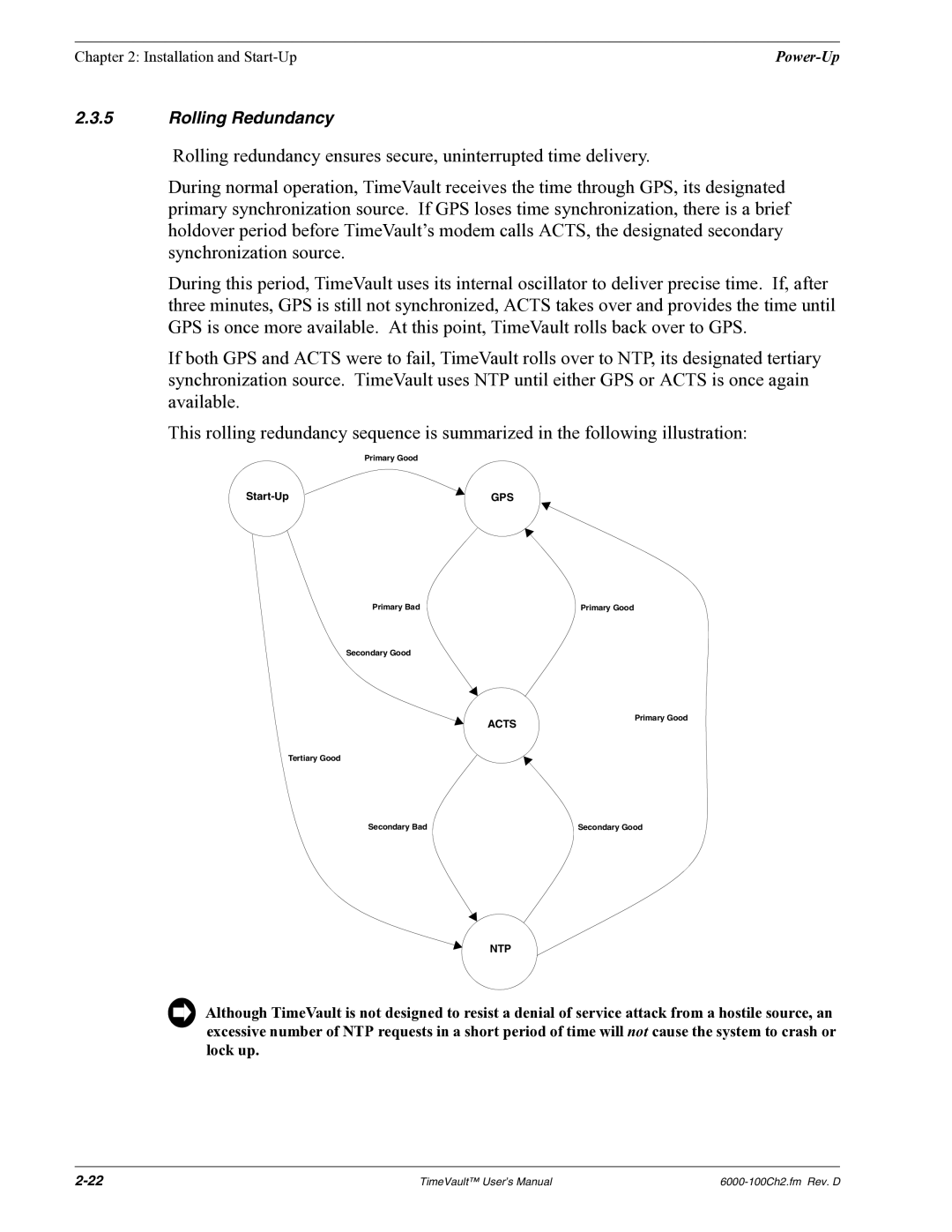
Chapter 2: Installation and |
2.3.5Rolling Redundancy
Rolling redundancy ensures secure, uninterrupted time delivery.
During normal operation, TimeVault receives the time through GPS, its designated primary synchronization source. If GPS loses time synchronization, there is a brief holdover period before TimeVault’s modem calls ACTS, the designated secondary synchronization source.
During this period, TimeVault uses its internal oscillator to deliver precise time. If, after three minutes, GPS is still not synchronized, ACTS takes over and provides the time until GPS is once more available. At this point, TimeVault rolls back over to GPS.
If both GPS and ACTS were to fail, TimeVault rolls over to NTP, its designated tertiary synchronization source. TimeVault uses NTP until either GPS or ACTS is once again available.
This rolling redundancy sequence is summarized in the following illustration:
| Primary Good |
GPS |
Primary Bad | Primary Good |
Secondary Good
ACTS
Tertiary Good
Primary Good
Secondary Bad | Secondary Good |
NTP
Although TimeVault is not designed to resist a denial of service attack from a hostile source, an excessive number of NTP requests in a short period of time will not cause the system to crash or lock up.
TimeVault™ User’s Manual |
